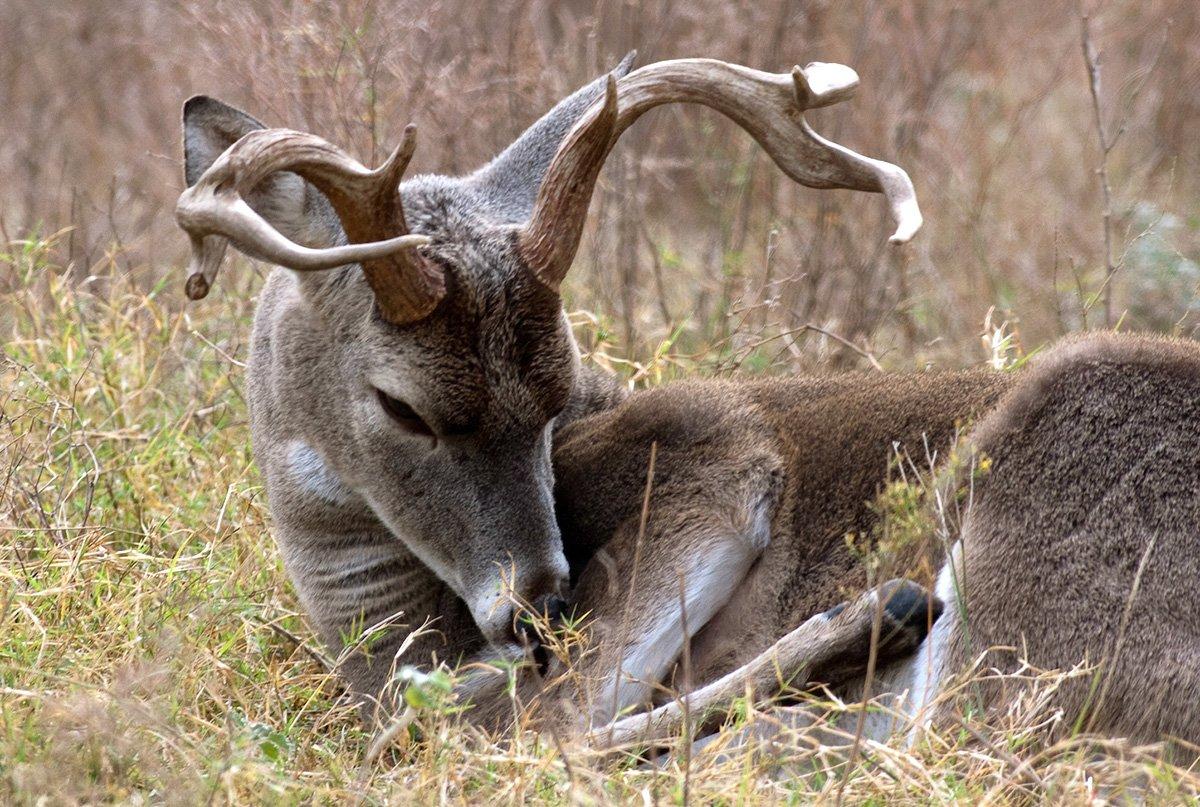Culling small-antlered bucks won't improve genetics in wild herds, but these deer still take up space, and often run off bigger whitetails
Really old whitetails with undesirable antler traits appear nationwide, but sometimes, these animals exist in higher concentrations. This occurs even in states and regions known for incredible genetics. From unmanaged areas to properly managed tracts, let's examine this phenomenon.
Unmanaged Areas
In unmanaged settings, many hunters are satisfied with shooting anything, and they don't cherry pick genetically superior bucks from the herd. Opportunity is the deciding factor, not antler size. If the overall pressure is modest, a number of bucks from all age classes — with various levels of genetic potential — live another year. This is why great bucks commonly come from unmanaged areas.
Mismanaged Areas
Most semi- or mismanaged areas are done so inappropriately. Genetically superior bucks are oftentimes shot when they are 2 or 3 years old, leaving the ugly bucks to reach older age classes. It isn't surprising that mature bucks in the herd express poorer antlers. Of course, due to the complexity of genetics, the potential for good antlers still exist in the herd's DNA, but bucks are killed soon after they express such traits, and never reach full potential. Therefore, less of them are on the landscape.
Properly Managed Areas
Hunters who wish to manage a herd properly harvest bucks based on age, not antlers. By doing so, deer are given the chance to express their full potential. Plus, the buck age structure and herd dynamics harmonize, leading to better hunting opportunities and healthier deer. Unfortunately, this the rarest of the three aforementioned scenarios, which is mostly due to what some call high-grading.
High-Grading
This consists of removing genetically superior deer before they reach maturity. I have seen 135- to 150-inch 2-year-olds that became 165- to 185-inch 3-year-olds. During the rut, these younger bucks cover a lot of ground during daylight hours. In areas with moderate to high hunting pressure, it's possible to wipe out the best young deer each season. This continuous cycle leaves only the mature — but genetically inferior — deer to survive.
In mismanaged settings, hunters focus on killing trophy deer without considering age. Of course, the easiest trophy is a genetically superior young buck. As a result, these deer die young.
Bucks with smaller antlers get a pass. They get older, smarter and much more difficult to kill. In time, you end up with really old bucks sporting little antlers, and they even run off other bucks with better genetics.
Outside Factors
I've studied genetics as it relates to free-ranging deer. Every biologist I talk to says it is impossible for hunters to impact the genetics of a herd simply by killing a few cull bucks each year. Too many uninfluenceable factors are involved, such as:
- Does contribute more than half of the genetic code for offspring's antlers.
- It's impossible to know a doe's genetic potential without a pedigree.
- The health of a buck in its first year impacts antler growth the rest of its life.
- Oftentimes, unidentifiable injuries to body and antlers impact antler expression.
- Habitat and soil are just as important, and often unimprovable.
Other things play roles, too. Despite this, it isn't unthinkable that removing all (or nearly all) of genetically superior bucks from a herd at young ages could have long-term effects on the future quality of bucks. That is merely a guess, but it seems logical.
Genetics are mysterious, and even skip generations. An ugly-racked buck can produce good-looking offspring. Small bucks can sire big-antlered deer. Dr. Jacobson, a biologist at Mississippi State, had such a buck in his breeding program. It didn't score over 135 inches, yet produced many exceptional offspring with much better antlers.
Antler growth factors aside, there is no disputing that these old, ugly bucks are space eaters. They inhabit areas on farms that other — potentially bigger — bucks would occupy if they weren't there.
The Solution
Land managers should remove as many of these ugly bully bucks as possible. Hopefully, deer with better genetics fill the vacuum. Accomplishing this isn't easy, though. You have to spend your buck tag(s), recruit the help of others to do so, or both.
As difficult as that sounds, it's the easiest part of the equation. The hardest is convincing neighboring hunters to jump on board, and shoot deer based on age rather than antler size.
All things considered, odds of killing all of the old bucks with small antlers and convincing all neighbors to be on board with this management style isn't likely. And maybe it isn't as simple as saying high-grading is the only (or even primary) factor in genetic deterioration. However, there is no doubt that it can't help matters either. So, let's start managing deer better. Let's focus on deer stewardship.








